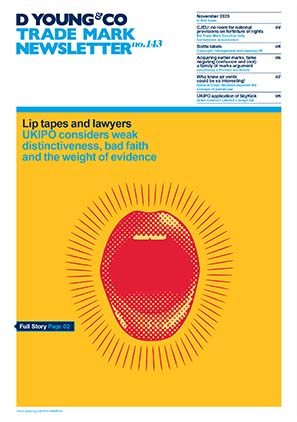Tough love: Match.com v Muzmatch
Match offers online dating services and owns of a number of registered trade marks for MATCH.COM in classes 9, 42 and 45; and MATCH (& small heart device) in class 45.
In April 2011, the defendant set up a business under the name Muzmatch with the aim of providing online matchmaking services to the Muslim community.
Match learned of Muzmatch’s activities in around January 2016 and asserted trade mark infringement and passing off. Proceedings were issued in July 2020 under both section 10(2) and 10(3).
The evidence showed that Match had used the marks MATCH and MATCH.COM interchangeably from its UK launch in 2001. Use of MATCH alone had occurred since that date, and by 2011 (the relevant date for assessing the claim) Match dominated the online dating market. The MATCH mark had been used both distinctively (identifying the provider of the services) and also descriptively (to describe a part of those services, the finding of a match/partner).
Muzmatch argued that its activities did not infringe, claiming that the word “match” used by itself is not distinctive and/or an ordinary descriptive word when used in relation to dating services. Muzmatch’s website did not use the word “match” descriptively, other than a single use in the form of the phrase “it’s a muzmatch” when notifying a user of a potential partner.
A medium level of similarity was found between the marks. Given the defendant’s arguments that “match” is descriptive rather than distinctive, the court considered the comments of the High Court regarding “the significance of commonality of descriptive signs” in Planetart LLC v Photobox Ltd ([2020] EWHC 713 (Ch), involving the mark “FreePrints”). That case held that:
(quoting the Court of Appeal in Reed Executive Plc v Reed Business Information Ltd: [2004] EWCA Civ 159) “where you have something largely descriptive the average consumer will recognize that to be so, expect others to use similar descriptive marks and thus be alert for detail which would differentiate one provider from another.”
there are no general rules as to how descriptiveness should be taken into account but it clearly should be done. Where common elements are descriptive/non-distinctive, that does not preclude a likelihood of confusion, but it does weigh against it.
the significance of conceptual similarity is somewhat downgraded when evaluating the likelihood of confusion, at least in so far as the marks are descriptive of the goods/services in question.
Finding a likelihood of confusion may well be appropriate where the average consumer recognises that the common element, whilst capable of being used descriptively, is in fact being used distinctively. The issue is fact dependent and must be assessed globally, including the context in which the signs have been used.
The judge was fully satisfied that, by 2011, relevant Match marks had acquired a substantial degree of distinctiveness and reputation as a badge of origin for Match’s online dating services. Use of “match” in a distinctive sense was not widespread in around April 2011, other than by Match itself.
In relation to the Muzmatch marks, the word “match” was clearly being used in a distinctive rather than descriptive sense. Additional elements such as “muz” and “UK” did not significantly reduce any likelihood of confusion. The evidence of Match’s dominant presence in the market as at 2011 (and continuing thereafter) meant that use of Muzmatch was likely to lead the average consumer to conclude that the company was connected with Match (and in particular, a part of that business specifically targeting Muslim users). For the same reasons, the passing off claim also succeeded.
As regards the section 10(3) claim, given the medium degree of similarity between the marks, and the identity of services, the factors that led the court to reach the conclusion that there was a likelihood of confusion between the marks would also establish a link in the mind of the average consumer as between those marks. The court was satisfied that the Muzmatch marks took unfair advantage of the distinctive character/repute of the Match marks. To show detriment to distinctive character, a claimant must prove actual injury to its mark (a change in economic behaviour of the average consumer) or at least a likelihood of that. In the absence of such, Match’s claim here failed.
In short
This case underlines the difficulties in enforcing a mark that is arguably descriptive (or at least less distinctive than others), and reinforces the importance of using such marks in a distinctive, “trade mark” way so that they quickly acquire distinctive character.
Related cases
- [2020] EWHC 713 (Ch): https://dycip.com/planetart-photobox
- [2004] EWCA Civ 159: https://dycip.com/3PbamKC

